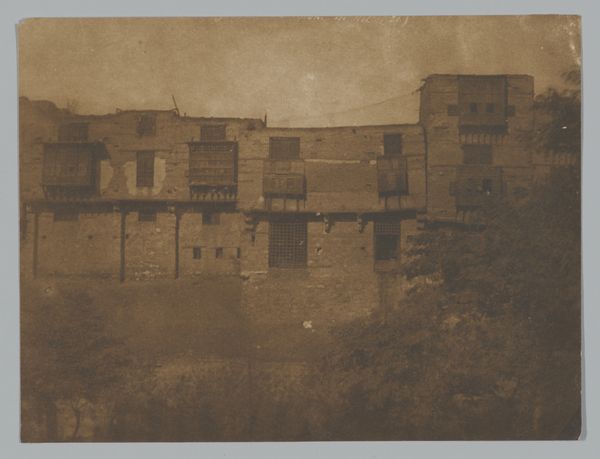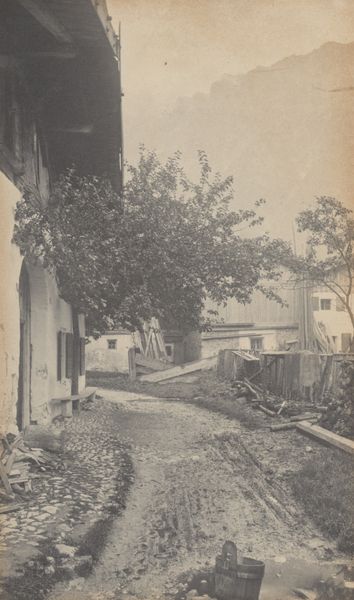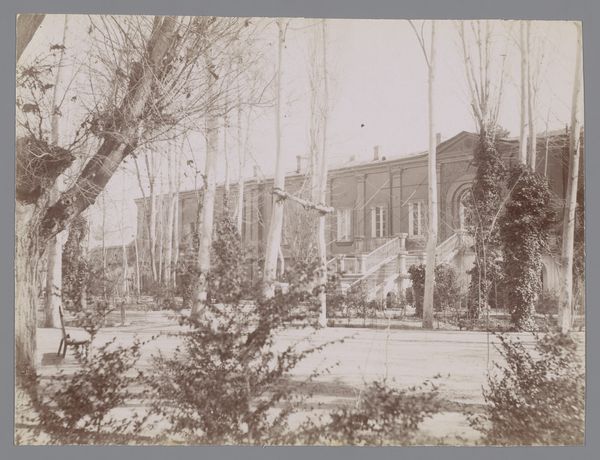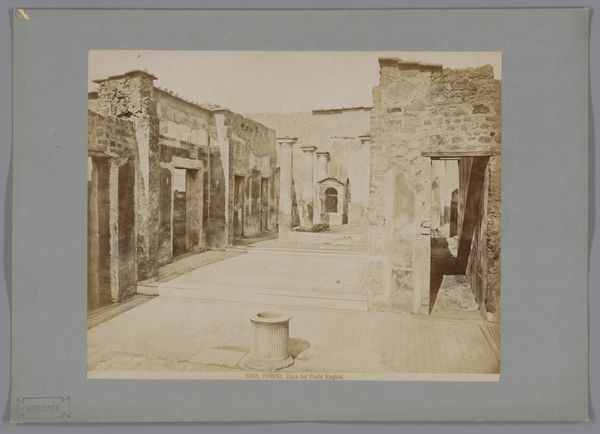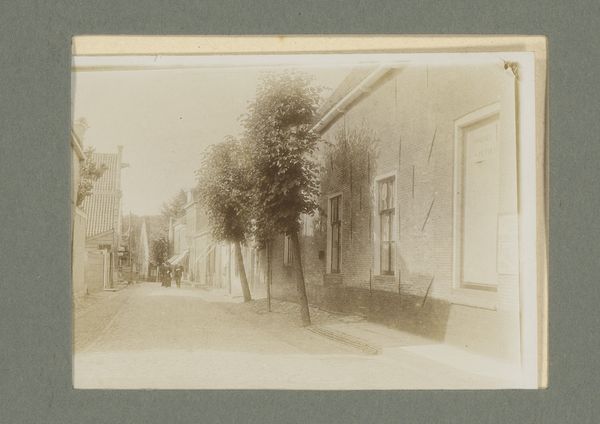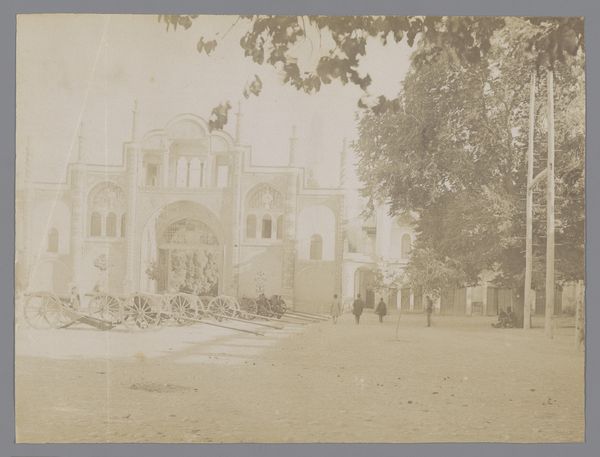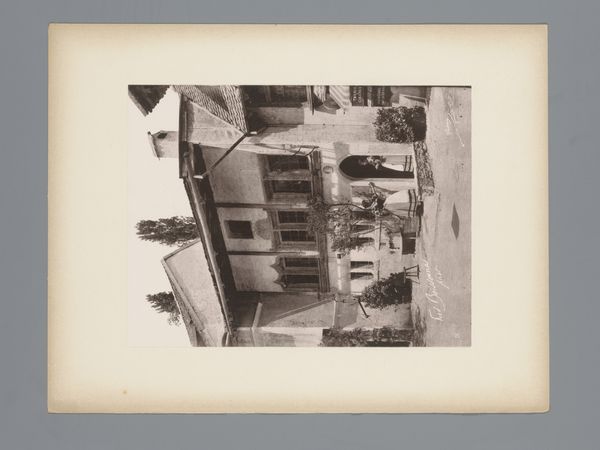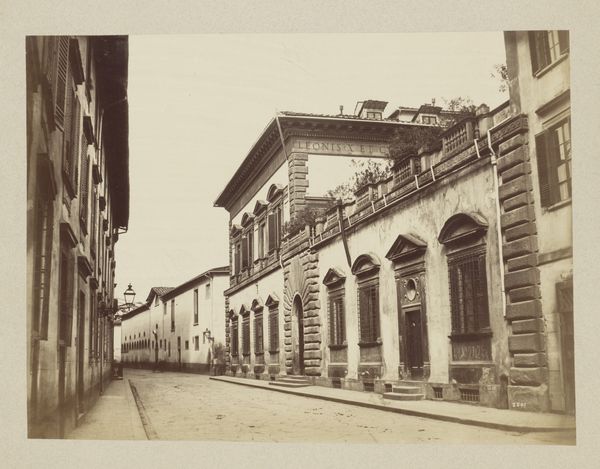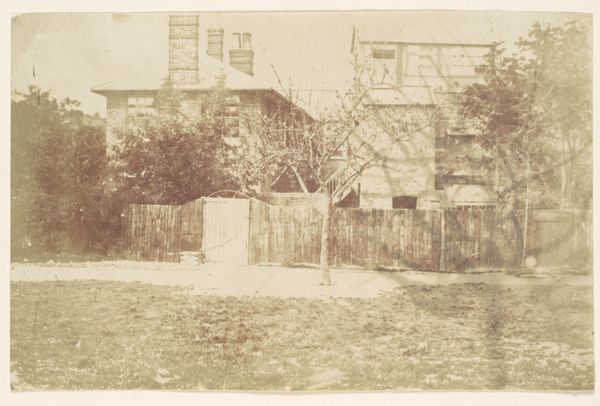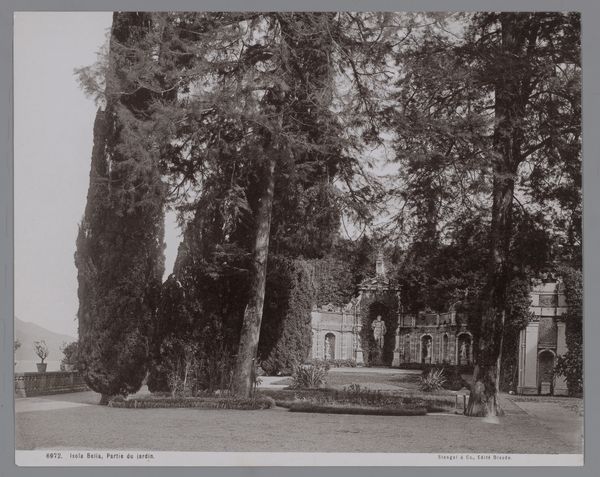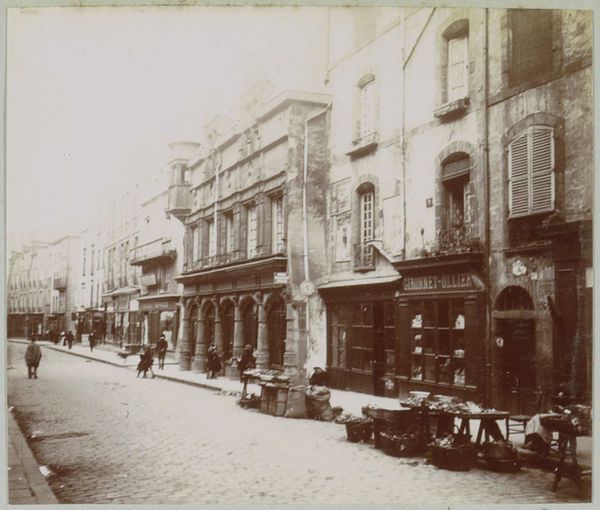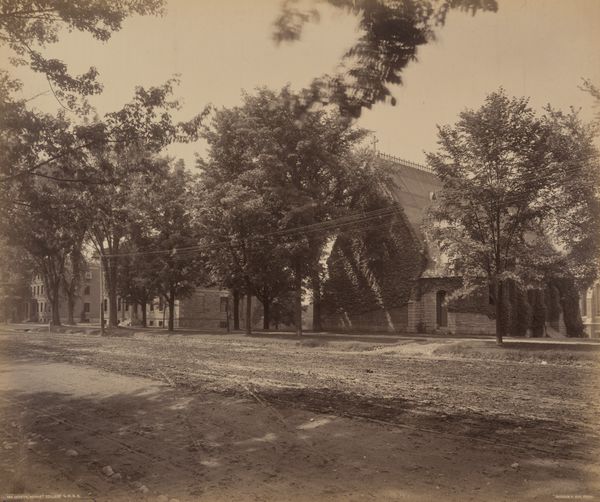![Duits Gezantschap/ambassade, Teheran [?], Iran by Antoine Sevruguin](/_next/image?url=https%3A%2F%2Fd2w8kbdekdi1gv.cloudfront.net%2FeyJidWNrZXQiOiAiYXJ0ZXJhLWltYWdlcy1idWNrZXQiLCAia2V5IjogImFydHdvcmtzLzhlMmJlOThhLTVkNTctNDc4NC1iYzQ4LTFmNzY1ZmNjMWQxMy84ZTJiZTk4YS01ZDU3LTQ3ODQtYmM0OC0xZjc2NWZjYzFkMTNfZnVsbC5qcGciLCAiZWRpdHMiOiB7InJlc2l6ZSI6IHsid2lkdGgiOiAxOTIwLCAiaGVpZ2h0IjogMTkyMCwgImZpdCI6ICJpbnNpZGUifX19&w=3840&q=75)
photography, albumen-print
#
landscape
#
photography
#
orientalism
#
watercolor
#
albumen-print
Dimensions: height 205 mm, width 155 mm
Copyright: Rijks Museum: Open Domain
Curator: This albumen print by Antoine Sevruguin, dating from around 1880 to 1910, captures what's believed to be the German Legation or Embassy in Tehran, Iran. Editor: It's almost spectral. The sepia tones give it an aged feel, and the skeletal trees add a stark, wintry mood to what is likely a quite important, if stoic, piece of architecture. Curator: Indeed. Sepia was characteristic of the albumen printing process. But let's consider the German embassy itself as a potent symbol. Embassies embody cultural and political power dynamics. It's interesting that Sevruguin, an Iranian photographer of Armenian descent, chose this subject. Editor: Precisely! This photograph isn't just a neutral architectural record. It's an engagement with the looming Western presence in Iran during the late 19th century. We need to remember how foreign powers used these visual documents in their colonial agendas. The framing with those bare trees almost suggests a deliberate obscuring, a shadowing of the Western structure. Curator: Perhaps. Or perhaps Sevruguin was employing compositional devices common in landscape photography, juxtaposing natural elements with constructed environments. Consider also the enduring impact of the “Orient” through art in the West, where Iranian settings gained appeal. Editor: But doesn’t this very appeal solidify colonial power structures, aestheticizing a power dynamic? Sevruguin's vantage point matters. It prompts questions about Iranian agency amidst this burgeoning period of international intervention. We are implicated as viewers within these same visual economies, too. Curator: I agree it encourages this kind of reflection. This photograph encapsulates not just a building but a historical moment—a convergence of Iranian culture, Western influence, and the lens of early photography itself. Editor: Absolutely. It asks us to critically examine the layers of meaning imbued in seemingly straightforward representations and to interrogate how these visual legacies impact our present.
Comments
No comments
Be the first to comment and join the conversation on the ultimate creative platform.
